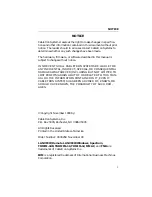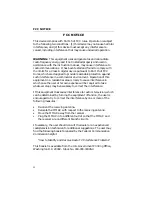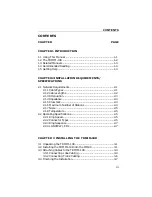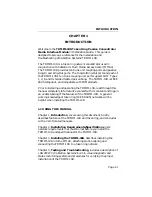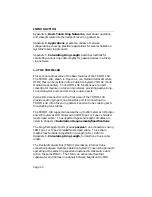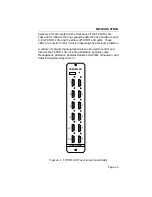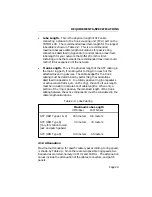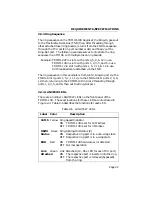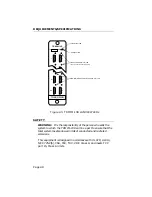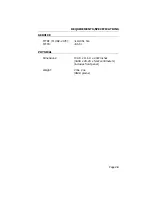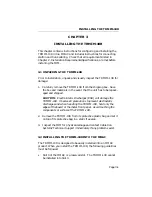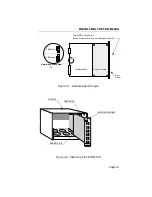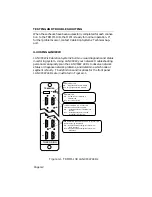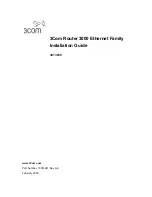
REQUIREMENTS/SPECIFICATIONS
Page 2-2
Table 2-1 (cont.). IBM Cable Types
Type 3
Usually four unshielded twisted pairs (UTP) of 24 AWG
solid wire for data or voice communication. Used for
cable runs in walls of buildings.
Type 5
Two 100/140
µ
m optical fibers in a single sheath.
Type 6
Two STP of 26 AWG stranded wire for data. This type is
used in patch panels or to connect devices to/from wall
jacks. Attenuation for Type 6 cable is 3/2 x Type 1 cable
(66 m of Type 6 = 100 meters of Type 1).
Type 8
One flat STP of 26 AWG stranded wire for under carpet
installation.
Type 9
Similar to Type 1, but uses 26 AWG solid wire.
Attenuation for Type 9 cable is 3/2 x Type 1 cable (66 m
of Type 9 = 100 meters of Type 1).
2.1.2 Cable Lengths
The TRMIM-10R is a passive concentrator. It neither regenerates
nor retimes ring signals and the cable lengths used for the TRMIM-
10R must consider the Adjusted Ring Length (ARL). ARL results
from automatic recovery processes that attempt to restore continuity
to a broken ring. The ARL is the longest potential ring length, the
ring that would exist following recovery from a failure of the shortest
ring segment trunk cable. Refer to the discussion of token ring
concepts related to ARL in Appendix A. Appendix C describes how to
calculate cable lengths in your network, giving consideration to ARL.
Considering ARL, two cable lengths must be defined for the TRMIM-
10R: Lobe Length and Trunk Length. Their combined length defines
the path between two token ring stations and cannot exceed the
maximum drive distance.
•
Drive Distance - Drive distance is the limit of reliable signal
propagation without the installation of repeaters in the ring. The
maximum drive distance using STP cabling is 770 meters (2525
feet) at 4 Mbit/sec and 346 meters (1138 feet) at 16 Mbit/sec.
These limits include the combined length of all trunk cables plus
twice the length of the longest lobe cable.


